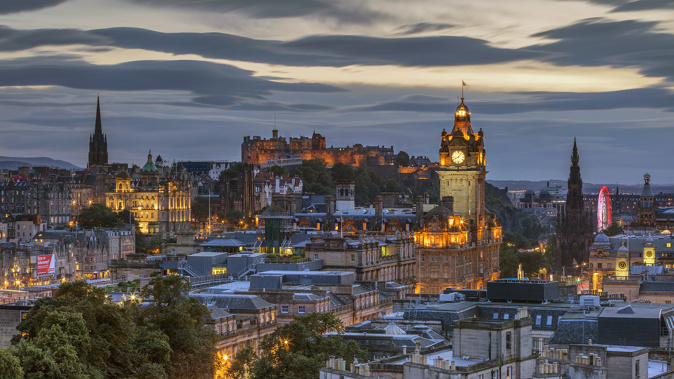
Brooding, imposing, ruggedly beautiful and spilling with forth with a storied history, Edinburgh stirs the senses of even the most jaded traveller. I’ve just reacquainted myself with the striking Scottish capital, as part of a riveting romp around the UK on Trafalgar’s Real Britain tour. Impossible to miss, with its lofty perch on a craggy volcanic hill, Edinburgh Castle is always irresistible. The admission lines can test your patience —we mercifully got here early— but a wander through this treasured symbol of Scottish heritage is compulsive.
My delightful Trafalgar local specialist guide Katrina, unpacked a trove of anecdotes about the castle’s history with compelling ease, as we trawled through its gritty collection of buildings and feasted our eyes on the Scottish crown jewels (not quite as blingy as the English). First built 800 years ago, the Scottish Royal Family used the castle as a royal residence until 1603. Fittingly, the statues of William Wallace and Robert the Bruce guard the main entrance to the castle, which holds the record as Britain’s most attacked castle, besieged on 26 occasions.
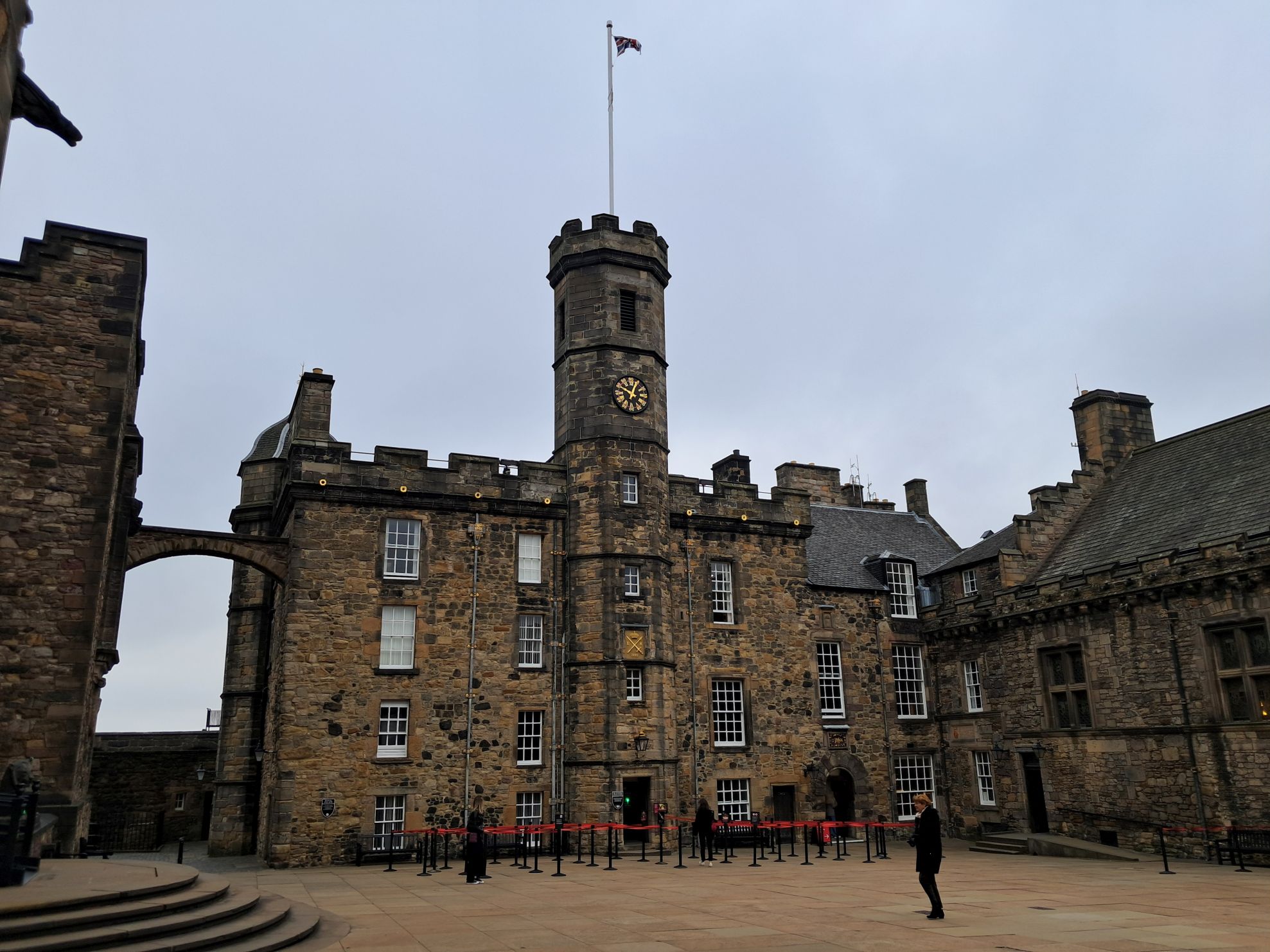 Exploring Edinburgh Castle. Photo / Mike Yardley
Exploring Edinburgh Castle. Photo / Mike Yardley
One of the biggest stains in Edinburgh’s backstory would have to be its passion and hysteria for witch-hunting. Edinburgh Castle’s forecourt, Castle Esplanade is where the Royal Military Tattoo is held every August. It occupies the same ground where many accused witches were killed. Just before the castle entrance check out the Witches' Well, a cast-iron fountain and plaque, in memory of the thousands of women who were burned at the stake or hanged, between the 15th and 18th centuries. Most women who were killed were generally herbalists or mentally ill. Suspected witches were first thrown into a lake to determine their innocence. Those who drowned were cleared, and those who had the audacity to survive were adjudged a witch and sent to the stake.
One of Britain’s great throughfares would have to be the Royal Mile, carving a path from the castle to the Palace of Holyrood House. Jutting off the Royal Mile, a fascinating cobweb of narrow, cobbled alleys and staircases. I love strolling this atmospheric street, studded with a procession of signature sights like John Knox House and St Giles’ Cathedral, established during the reign of King David, 900 years ago.
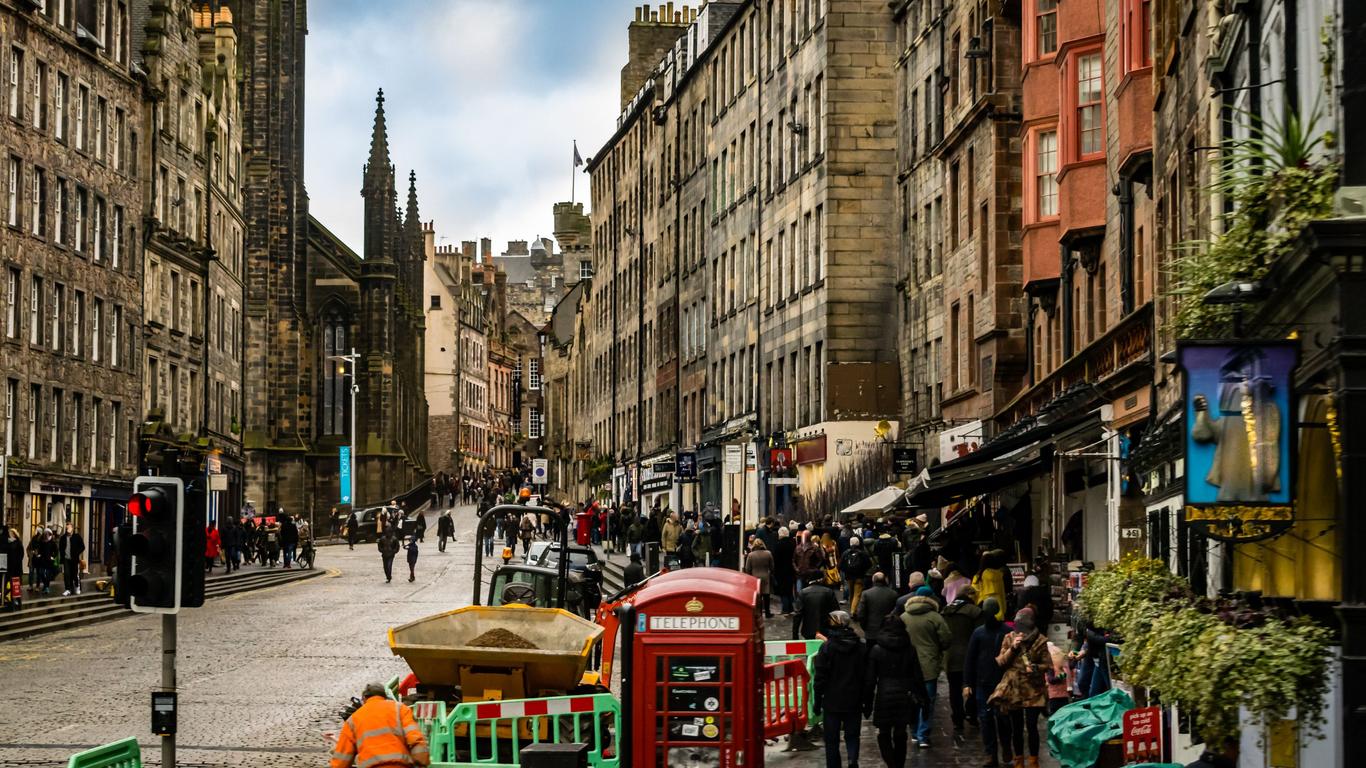 Edinburgh Royal Mile. Photo / Supplied
Edinburgh Royal Mile. Photo / Supplied
Dark streets and dark history are recurring themes in the city’s narrative. Dive into the depths of subterranean Edinburgh, because the Old Town is stacked like a pancake, throwing up glimpses of city life over the centuries. One of the most absorbing such encounters is to venture down into Mary King’s Close. These 17th century streets were once a breeding ground for the black death, over-run with flea-carrying rats, which ended up killing a quarter of Scotland’s population. But the fatality count was much higher in these tight quarters. Many of the residents who survived were treated by the plague doctor, George Rae. He would slice off the top of the victim's sore and jam a red-hot poker into the wound to cauterise it.
The technique, while agonising, did indeed save lives. It’s one of the many anecdotes I gleaned while touring the close, which was emptied and sealed up over a century ago. The Royal Exchange was built on top of it and the close was forgotten about, until workers digging on the street above accidentally punched down into the winding lanes. Rediscovered, the close became a handy bomb shelter during WWII and has since become a tourist site. One of the most famous ghosts supposed to live here is a 10-year-old girl named Annie, killed by the plague. Believers report temperature changes and feeling a certain presence in her room. Toys, dolls, and sweets are continuously left for her, in the close.
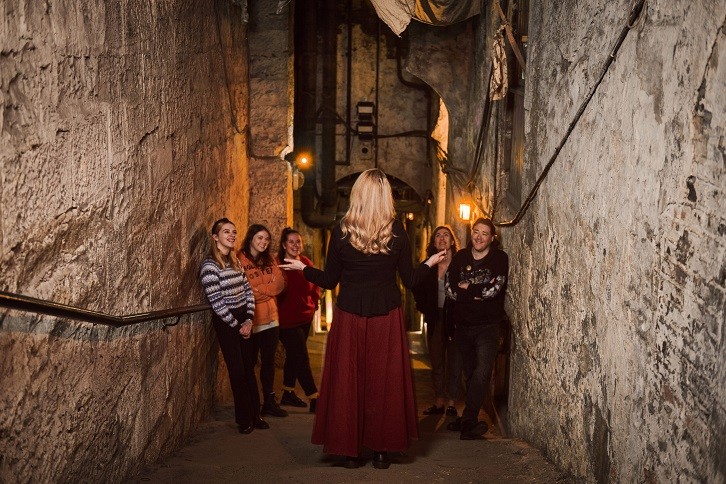 Mary King's Close Tour. Photo / Visit Scotland
Mary King's Close Tour. Photo / Visit Scotland
Another absorbing underground encounter is to take a tour through the Blair Street vaults. This labyrinthine network of chambers, located within the 19 arches of South Bridge, previously housed thousands of people in the most squalid of conditions, later repurposed as a hotbed for brothels, gambling dens and associated vice. Body snatchers also used the cool, dark vaults to store corpses. Rumoured to be among the city’s most haunted spaces, traipsing through this underground world by candlelight is not for the faint-hearted!
See Edinburgh like a local and head up to the view of views via Jacob’s Ladder. Carved out of volcanic rock, this stirring pathway us unknown to many visitors, serving as a short-cut between Waverley Railway Station’s parking bay and the sublime perch of Calton Hill. Over 300 years old, this passage originally served as a key way for locals to get in and out of the city, from the Old Town to the New Town. It’s the best way to zip up monument-studded Calton Hill for unparalleled views of the castle and the city, backdropped by the ancient volcano, Arthur’s Seat. Edinburgh loves its follies and another dramatic specimen is the Scott Monument that towers above Princes Street Gardens. Illustrating Edinburgh’s reverence for its literature heritage, the Scott Monument is a ridiculously-sized Gothic tower dedicated to Sir Walter Scott - the largest monument to any writer in the world. Trek up the 287 steps for more sumptuous city views.
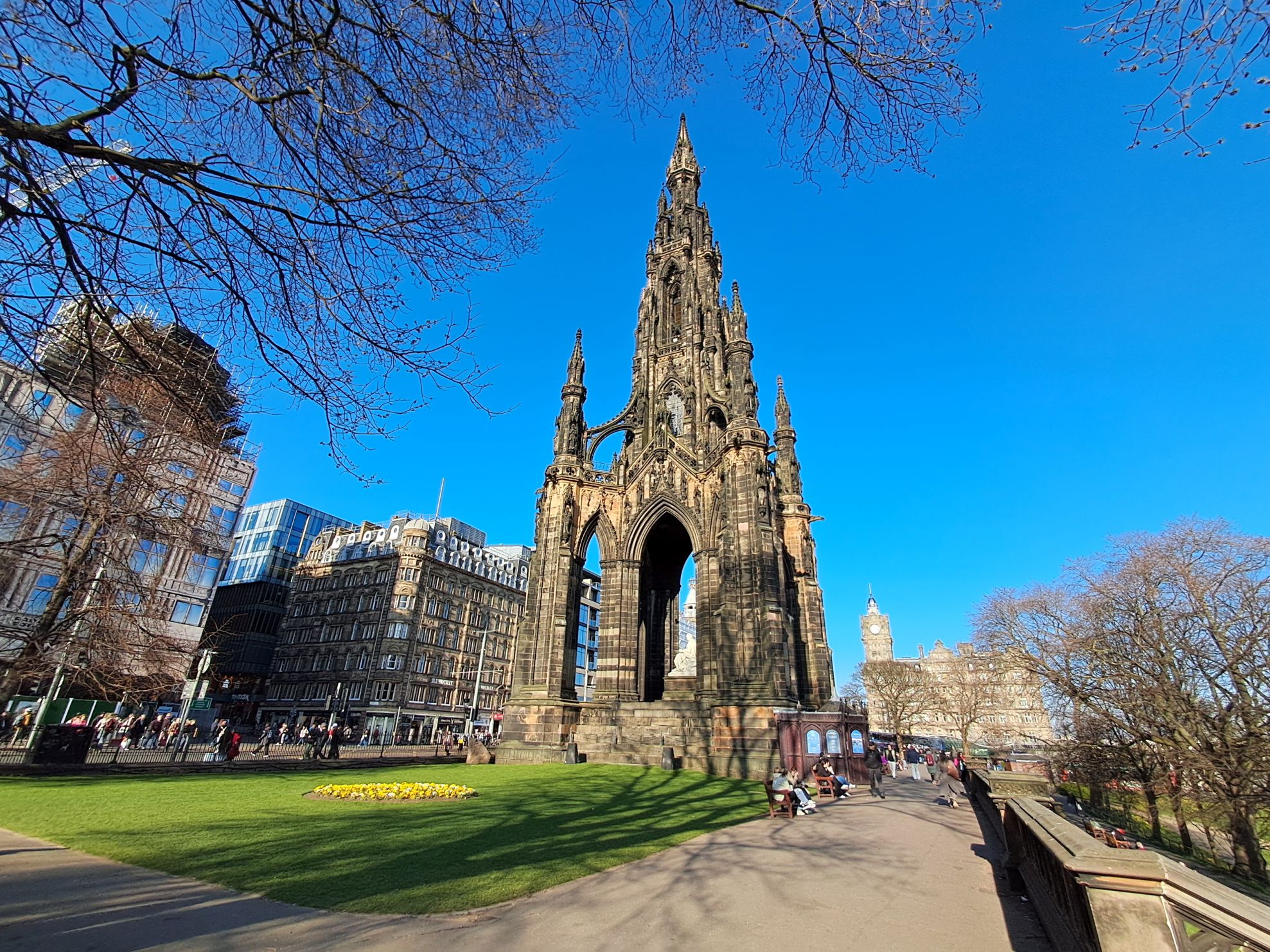 Scott Memorial in Princes Gardens. Photo / Mike Yardley
Scott Memorial in Princes Gardens. Photo / Mike Yardley
If the weather is grizzly, there’s every chance you might opt to stay dry inside the National Museum of Scotland, a tub-thumping temple to Scottish pride, stacked with some great exhibits including Dolly the Sheep - the first cloned mammal from an adult cell. But if you share my obsession with panoramic city vistas, here’s an insider’s tip. Take the lift to the 7th floor and exit onto the rooftop terrace. Slap bang in the middle of the Old Town, it’s s tunning vantage point, gazing across Auld Reekie’s rooftops and the bustle below.
As you may know, New Town Edinburgh is defined by the Georgian architecture of the 18th century that provided far more comfort and space for the well to do, fed-up with the overcrowding and squalor of the Old Town. It’s a masterpiece of historic urban planning, resolutely Georgian in design, with its wide streets and elegant architecture. If there’s one spot to check out, do not miss Charlotte Square. This fast became home to Scotland’s brightest thinkers, surgeons, and aristocrats. Alexander Bell lived at No.14, No. 9 was home to the pioneer of antiseptic medicine, Lord Lister of Listerine fame. JM Barrie lived here for a while, and No.6 is the No.10 Downing Street of Scotland, home to the country's First Minister. Though the horse-drawn carriages and sedan chairs have long gone, Charlotte Square is living, breathing history.
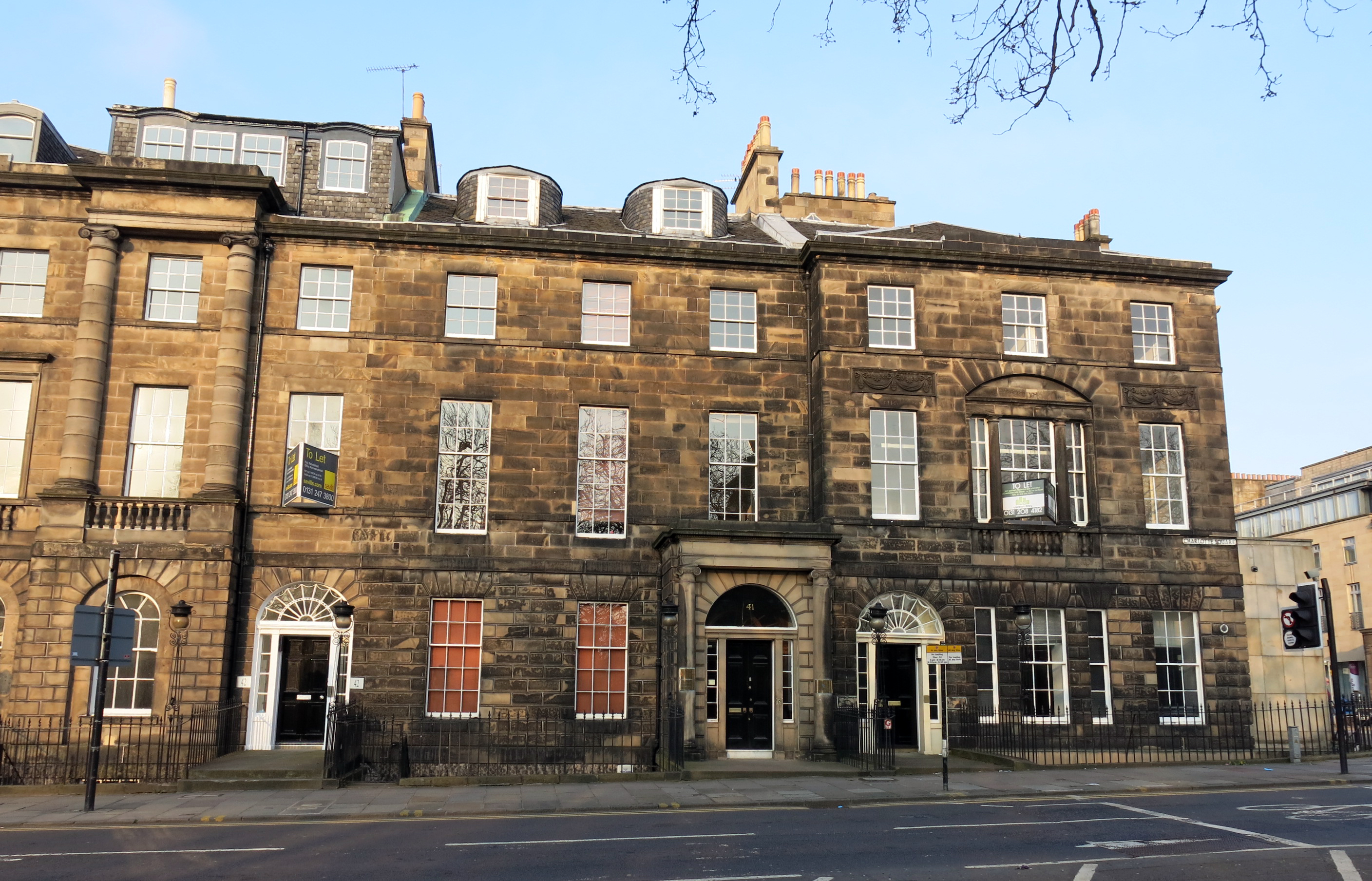 Georgian finery in Charlotte's Square. Photo / Supplied
Georgian finery in Charlotte's Square. Photo / Supplied
A sure-bet way to get a flavour for the city’s soul is to enjoy a pint or a dram or two from the plethora of historic pubs. One of my favourites is Deacon Brodie’s Tavern on the Royal Mile. The pub is a tribute of sorts to the local character who inspired Robert Louis Stevenson to write Jekyll and Hyde. Brodie was head of the guild of carpenters, widely respected for his craftsmanship. With access to some of the richest houses in town, he ended up making copies of house keys, which he would burgle at night, after working in them during the day. Finally caught in 1788, his hanging drew one of Edinburgh’s largest crowds for an execution.
Also in the Old Town, on Candlemaker’s Row, Greyfriars Bobby's bar is adorned with a Skye Terrier dog statue on its awning - a homage to Edinburgh’s most famous pooch. The story goes that Bobby stood vigil and slept at his owner's grave, guarding his master for 14 years after his death. His dedication became legendary, and when he finally died in 1872, he was laid to rest in Greyfriars churchyard, close to his owner's grave. A public statue was erected the following year, close to the namesake pub. Disney even made a film about Bobby.
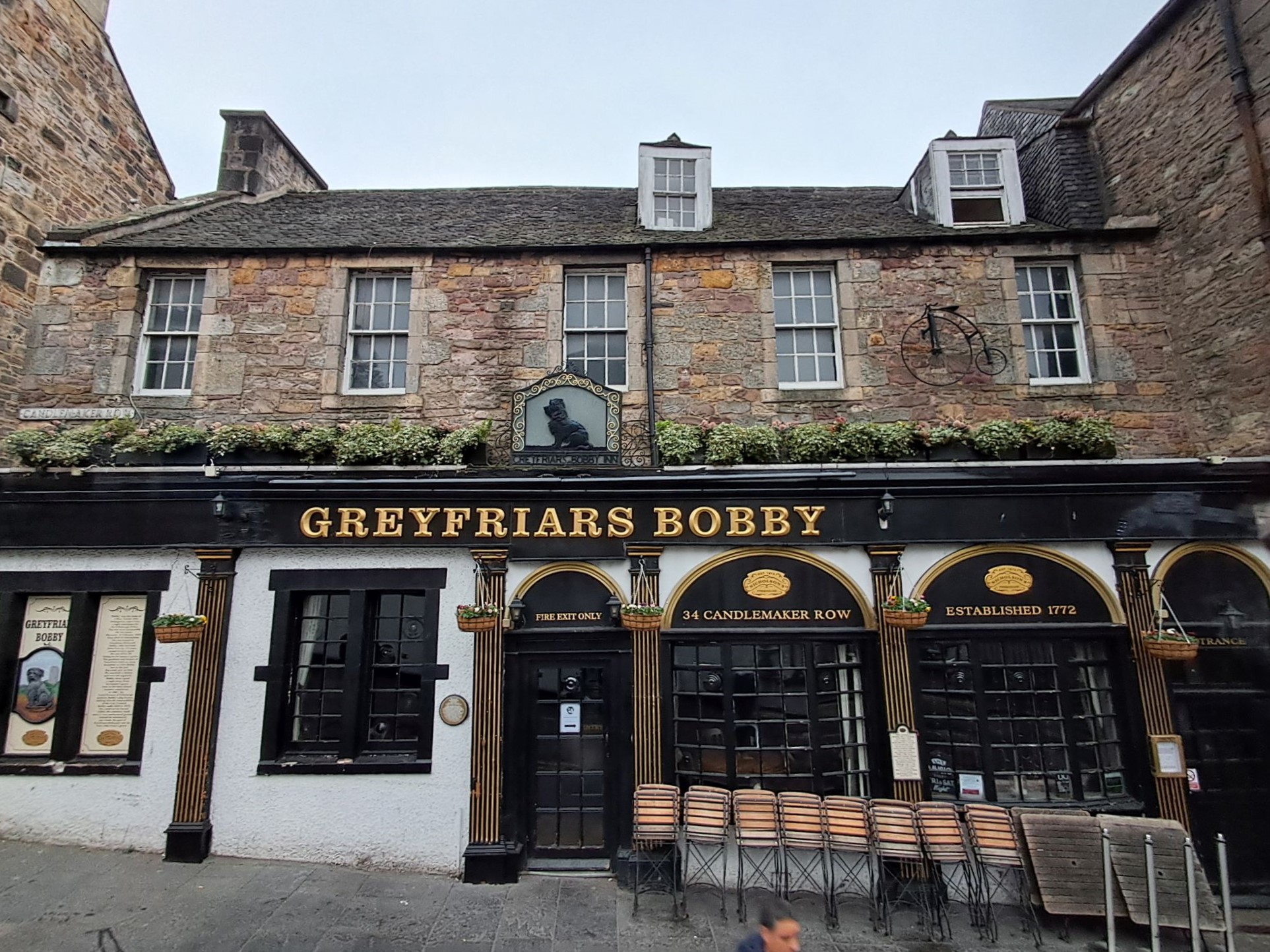 Greyfriars Bobby Pub. Photo / Mike Yardley
Greyfriars Bobby Pub. Photo / Mike Yardley
Finally, take a jaunt to Edinburgh’s historic port of Leith. It’s where the hip young things love to hang-out sipping creative cocktails, but it’s also home to Royal Yacht Britannia - an experiential must for royal junkies. Permanently berthed at Ocean Terminal, the on-board tours are astoundingly comprehensive – it’s access all areas, allowing you to see where the royals ate, slept and played. Left in situ after the yacht was decommissioned in 1997, the state reception rooms and even the Queen’s Bedroom have been left exactly as they were. You can even see Princess Margaret’s numerous cigarette marks. The ship brims with royal memorabilia, artefacts and a trove of official gifts.
Get the insider’s view on Edinburgh, with authentic, in-the-know and immersive encounters. That’s what I loved about touring Edinburgh with Trafalgar. Trafalgar’s Real Britain tour serves up a dazzling array of headline attractions, experiences and insights, all seamlessly stitched together over 6 days. Optional add-ons include local theatre shows, walking tours and even seasonal events like the Royal Edinburgh Military Tattoo. 2026 pricing for the tour is from $3,056pp. For full details head to trafalgar.com/en-nz/tours/real-britain
Mike Yardley is Newstalk ZB’s resident traveller and can be heard every week at 11.20am on Saturday Mornings with Jack Tame.
Take your Radio, Podcasts and Music with you









